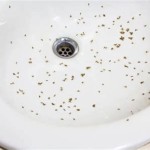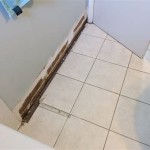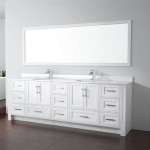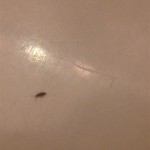How to Install a Broan Bathroom Fan: A Comprehensive Guide
Installing a Broan bathroom fan is a common home improvement task that can significantly improve ventilation, reduce moisture, and prevent mold growth in your bathroom. A properly functioning bathroom fan removes excess humidity generated during showers or baths, contributing to a more comfortable and healthier environment. While this project can be undertaken by a homeowner with basic DIY skills, it requires careful planning, attention to detail, and adherence to safety precautions. This article provides a step-by-step guide on how to install a Broan bathroom fan, ensuring a successful and effective installation.
### Key Considerations Before InstallationBefore commencing the installation process, it is crucial to address several key considerations. These include selecting the appropriate fan size, ensuring proper electrical connections, and planning for ductwork. Neglecting these preliminary steps can result in an inefficient or even hazardous installation.
Fan Size (CFM):
The size of the bathroom fan is measured in Cubic Feet per Minute (CFM), which indicates the volume of air the fan can exhaust in a minute. Selecting the correct CFM rating is essential for effective ventilation. As a general rule, a bathroom fan should have a CFM rating equal to or greater than the square footage of the bathroom. For example, a 50-square-foot bathroom requires a fan with a CFM rating of at least 50. For bathrooms larger than 100 square feet, it is recommended to use a more precise calculation: 1 CFM per square foot. Bathrooms with features like high ceilings, whirlpool tubs, or showers used frequently may require a higher CFM rating. Consult the Broan fan's documentation for recommended CFM calculation and sizing.Electrical Considerations:
Bathroom fans require a dedicated electrical circuit. Ideally, this should be a 15-amp circuit. It is imperative to disconnect the power to the bathroom circuit at the circuit breaker before starting any electrical work. Use a non-contact voltage tester to verify that the power is indeed off. If you are unfamiliar or uncomfortable with electrical work, it is strongly recommended to hire a qualified electrician to handle the electrical connections. Improper wiring can lead to electrical shock, fire hazards, or damage to the fan. Always adhere to local electrical codes and regulations.Ductwork Planning:
Proper ductwork is crucial for the efficient removal of moist air. The ductwork should be as short and straight as possible, minimizing bends and turns, which can restrict airflow. Ideally, the ductwork should vent to the outside of the house, not into an attic or crawl space. Venting into these areas can lead to moisture buildup and mold growth. Use rigid metal ductwork whenever possible, as it provides better airflow and is less prone to kinking or collapsing compared to flexible ductwork. Ensure the ductwork is properly insulated to prevent condensation inside the duct, which can cause water damage. Check local building codes for ducting regulations. ### Step-by-Step Installation ProcessThis section outlines the detailed steps involved in installing a Broan bathroom fan. This guide presumes that there is no existing fan. If replacing an existing fan, the removal of the old fan will be required before following these steps. Read and understand all the manufacturer's instructions before proceeding.
1. Gather Tools and Materials:
Before starting any work, gather all the necessary tools and materials. This will help streamline the installation process and prevent unnecessary delays. You will need:- Broan bathroom fan
- Screwdriver (Phillips and flathead)
- Wire stripper/cutter
- Wire connectors (wire nuts)
- Electrical tape
- Non-contact voltage tester
- Utility knife
- Pencil
- Tape measure
- Drill with drill bits
- Hole saw (if required)
- Safety glasses
- Gloves
- Duct tape or foil tape
- Ductwork (rigid metal ductwork is preferred)
- Level
- Ladder or step stool
- Stud finder
- Caulk (optional, for sealing around the fan housing)
2. Prepare the Installation Area:
Locate the desired position for the fan. Ideally, it should be positioned centrally in the bathroom or near the shower/tub area for optimal moisture removal. Use a stud finder to locate ceiling joists. The fan housing needs to be securely mounted to a joist. If the chosen location is not between two joists, you may need to install support framing. Mark the outline of the fan housing on the ceiling using the provided template or by tracing the housing itself.3. Cut the Ceiling Opening:
Using a utility knife or drywall saw, carefully cut along the marked outline. Be cautious not to cut into any wiring or plumbing that may be hidden behind the ceiling. Once the opening is cut, gently remove the drywall piece.4. Install Support Framing (If Necessary):
If the fan housing doesn't directly align with existing joists, you will need to install support framing between the joists. Cut pieces of lumber (typically 2x4s) to fit snugly between the joists and secure them with screws or nails. Ensure the framing is level and provides a solid surface for mounting the fan housing.5. Install the Fan Housing:
Place the fan housing into the ceiling opening. Align the housing with the support framing or joists. Secure the housing to the framing using screws or nails. Ensure the housing is level and securely attached to prevent vibrations and noise. Some fan models have adjustable brackets that can be extended to reach the joists.6. Connect the Ductwork:
Attach the ductwork to the fan housing's exhaust port. Use duct tape or, preferably, foil tape to create a tight and airtight seal. Foil tape is more durable and less prone to drying out and cracking over time. Run the ductwork to the outside of the house, ensuring it vents properly. If the ductwork needs to pass through an attic or crawl space, insulate it thoroughly to prevent condensation. Secure the ductwork to the framing or structure to prevent it from sagging or disconnecting.7. Wire the Fan:
This is the most critical step and requires extreme caution. Turn off the power to the bathroom circuit at the circuit breaker. Use a non-contact voltage tester to verify that the power is off. Connect the wires from the fan to the house wiring according to the manufacturer's instructions and local electrical codes. Typically, there will be black (hot), white (neutral), and green (ground) wires. Use wire connectors (wire nuts) to securely join the wires. Wrap the connections with electrical tape for added insulation and security. Carefully tuck the wires into the electrical box within the fan housing, ensuring they are not pinched or strained.8. Install the Fan Motor and Cover:
Once the wiring is complete, carefully insert the fan motor into the housing. Secure it according to the manufacturer's instructions. Attach the fan cover, ensuring it is properly aligned and securely fastened. The cover usually snaps into place or is secured with screws.9. Test the Fan:
Turn the power back on at the circuit breaker. Test the fan by switching on the bathroom light or the dedicated fan switch. Verify that the fan operates smoothly and quietly. Check for any unusual noises or vibrations. If the fan does not operate correctly, turn off the power and re-check the wiring connections.10. Seal Around the Housing (Optional):
To prevent air leaks, apply a bead of caulk around the perimeter of the fan housing where it meets the ceiling. This will help to improve the efficiency of the fan and prevent drafts. ### Troubleshooting Common IssuesEven with careful planning and execution, issues can arise during or after the installation process. This section outlines some common problems and potential solutions.
Fan Not Working:
If the fan does not operate after installation, the first step is to double-check the wiring connections. Ensure that the power is turned off at the circuit breaker before inspecting the wiring. Verify that all wires are securely connected with wire connectors and that the connections are properly insulated with electrical tape. Also, check the circuit breaker to ensure it has not tripped. If the wiring is correct and the circuit breaker is not tripped, the fan motor may be defective. Contact the manufacturer for warranty information or replacement options.Excessive Noise:
Excessive noise can be caused by several factors. Check that the fan housing is securely mounted to the joists or support framing. Loose mounting can cause vibrations that amplify the noise. Also, inspect the fan blades for any obstructions or damage. Debris or bent blades can cause the fan to become unbalanced and noisy. Ensure that the ductwork is properly supported and that there are no sharp bends or restrictions that could impede airflow and create noise. If the noise persists, the fan motor may be defective or require lubrication. Consult the manufacturer's instructions for information on lubricating the motor.Insufficient Airflow:
Insufficient airflow may indicate that the fan is undersized for the bathroom. Verify that the CFM rating of the fan is appropriate for the size of the bathroom. Also, check the ductwork for obstructions or restrictions. Kinked or collapsed ductwork can significantly reduce airflow. Ensure that the ductwork is as short and straight as possible and that it vents properly to the outside. If the ductwork is long or has many bends, consider using a larger diameter duct to improve airflow. Also, check the flapper on the exterior vent to ensure it opens and closes freely. A stuck flapper can restrict airflow.Condensation Issues:
Condensation problems can occur if the ductwork is not properly insulated or if the fan is not venting to the outside. Ensure that the ductwork is thoroughly insulated, especially in unconditioned spaces like attics or crawl spaces. Verify that the ductwork vents directly to the outside and not into an attic or crawl space. Venting into these areas can lead to moisture buildup and mold growth. Also, ensure that the fan is used regularly, especially after showers or baths, to remove excess humidity.By following these steps and addressing potential issues, homeowners can successfully install a Broan bathroom fan and improve the ventilation and air quality in their bathrooms. Remember to prioritize safety and consult with a qualified professional if you have any doubts or concerns.

Broan Invent Series How To Install

Remove Install A Bathroom Fan Grille In 1 Min

How To Replace A Bathroom Ceiling Fan Broan 671 Easy And Simple Tutorial

How To Clean Replace Light Broan Model 678 Exhaust Fan

How To Replace Broan 670 671 And 688 Bathroom Fan Assembly

Broan Nutone Roomside Series 110 Cfm Ceiling Bathroom Exhaust Fan With Cleancover Energy Star Aern110k The Home Depot

Costco Broan 80 Cfm Cst80sl Bathroom Fan Wiring

What You Need To Know About Installing A Broan Nutone Exhaust Fan Williams

Broan Nutone Easy Install Bathroom Ventilation Fan Replacement Grille In White Fgr101s The Home Depot

Broan Nutone Quick Installation Bathroom Exhaust Fan Grille Cover With Led Fg500ns The Home Depot
Related Posts







